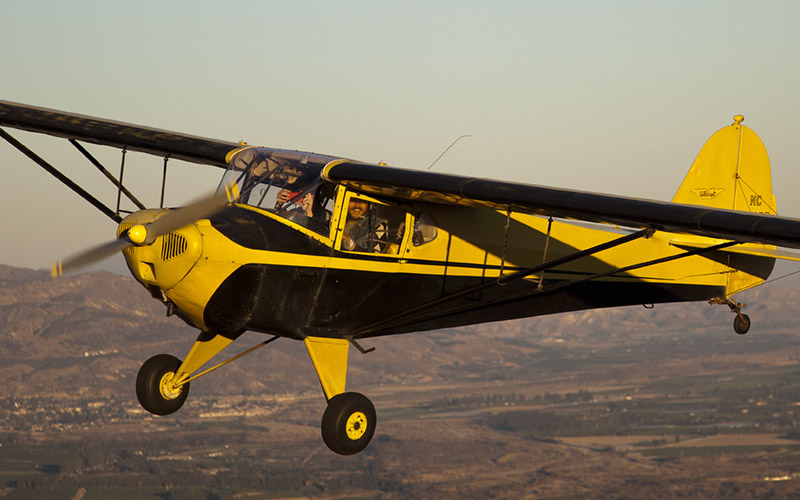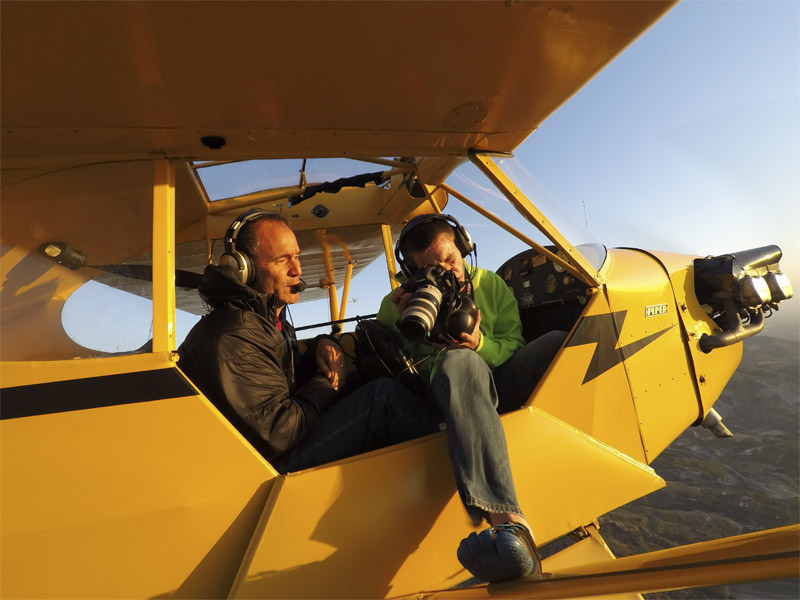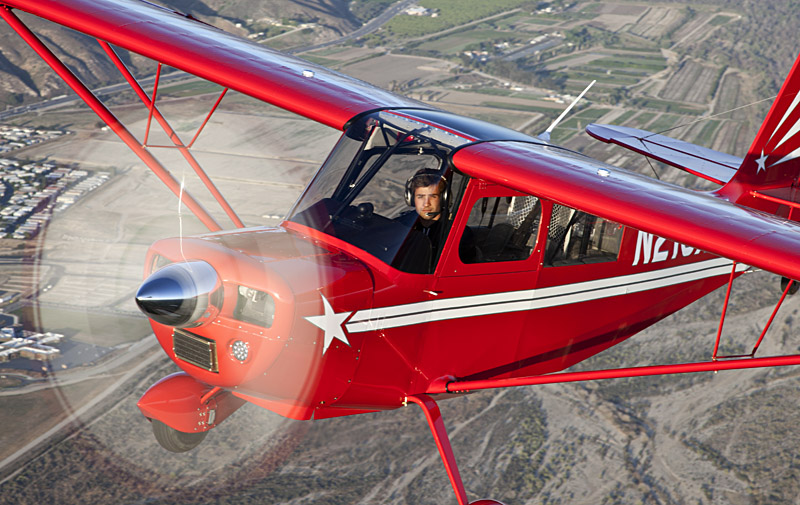Sharp Air-To-Air Photography
Photographing other aircraft in the air has unique challenges. It is a very dynamic environment with both the subject aircraft and the photo aircraft in motion against a continually moving background. When photographing a propeller driven airplane, there is one additional feature to consider, and that is the propeller of the subject airplane.
Most aerial photography is done with very high shutter speeds to help insure sharpness of the subject. Slow shutter speeds often result in blurry subjects because of the motion of the aircraft and camera. High shutter speeds reduce motion blur, which is normally desirable, but high shutter speeds can even effectively stop any apparent motion of a propeller. While this will help insure the overall sharpness of the image, it eliminates one of the most unique characteristics of a shoot like this, which is the motion of a spinning propeller.

The propeller appearing as a spinning disk, adds a dynamic “in motion” look to the subject aircraft. The camera’s shutter speed is what will determine whether that prop looks like it is spinning or fixed. To determine the maximum shutter speed to get this result, we first take the revolutions per minute (RPM) of the subject airplane. A typical light airplane will use an RPM of about 2,400. Divide the RPM by 60 to get the revolutions per second. In this case 2,400/60 = 40 revolutions per second, which means that in 1/40th of a second, the propeller will make one revolution. If the propeller is a two bladed propeller, the entire disk of the propeller will be covered in 1/80th of a second. To insure a complete propeller disk in the image, in this situation we would us a 1/60th of a second. This will account in variations in the subject airplane’s engine speed.
Anyone with photography experience will know that getting sharp images while hand holding a camera standing firmly on the ground with a shutter speed of 1/60th is difficult at best. Now try hand holding the camera while shooting from a moving airplane with a strong wind coming through the window with the subject airplane in motion against a moving background. Our first attempts at this type of photography resulted in only about 15% of the images being sharp. This was very frustrating and impractical since about 85% of the images were too blurry throughout to use.

Then we found a solution through Kenyon Laboratories, www.ken-lab.com, the leading manufacturer of gyro stabilizers. We purchased a Kenyon 6 x 6 gyro, which is a 3 axis gyro designed to stabilize cameras up to 11 pounds, which would accommodate our camera equipment. A gyro stabilizer is basically a stabilizing platform that dampens motion and vibration. This piece of equipment made air-to-air photography at slow shutter speeds possible. Once we started shooting with the Kenyon gyro, about 90% of the images shot were sharp as opposed to the previous 15%.


